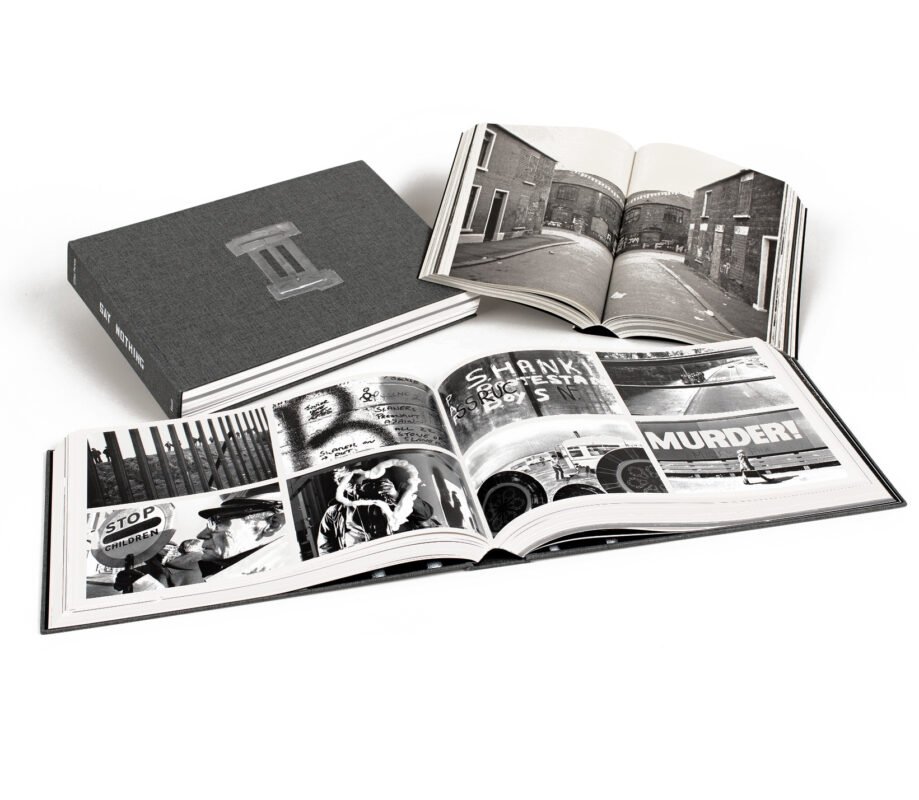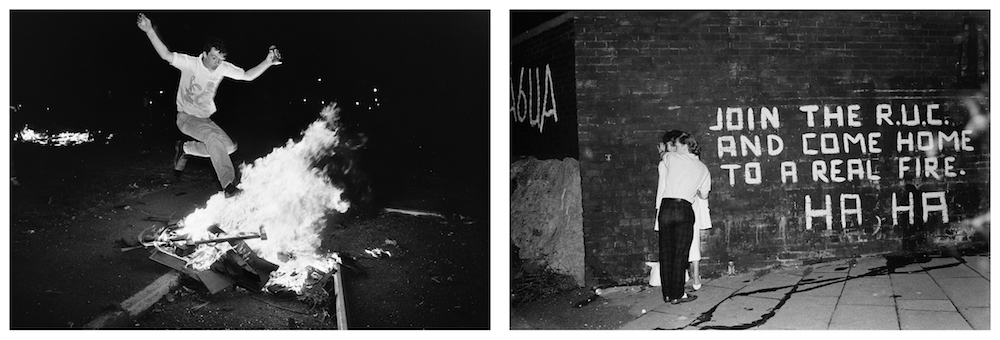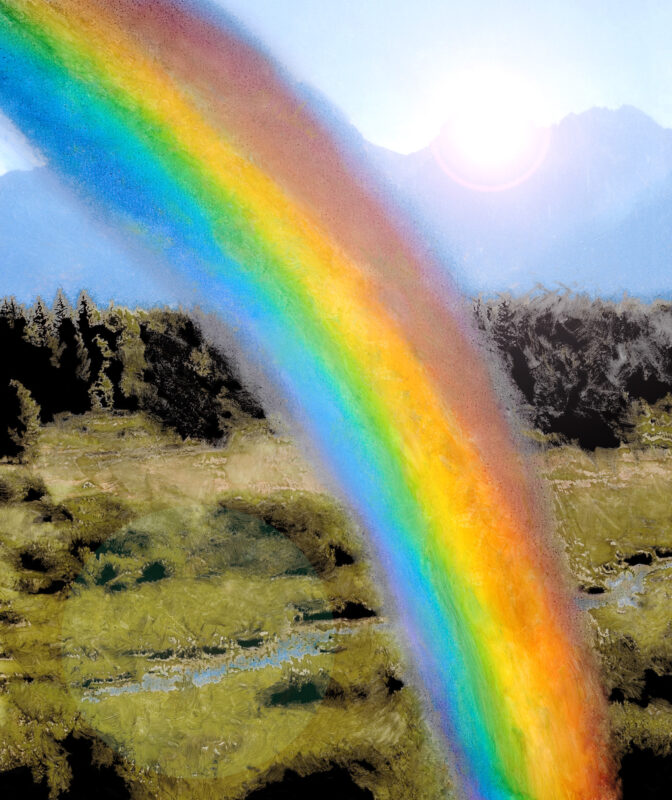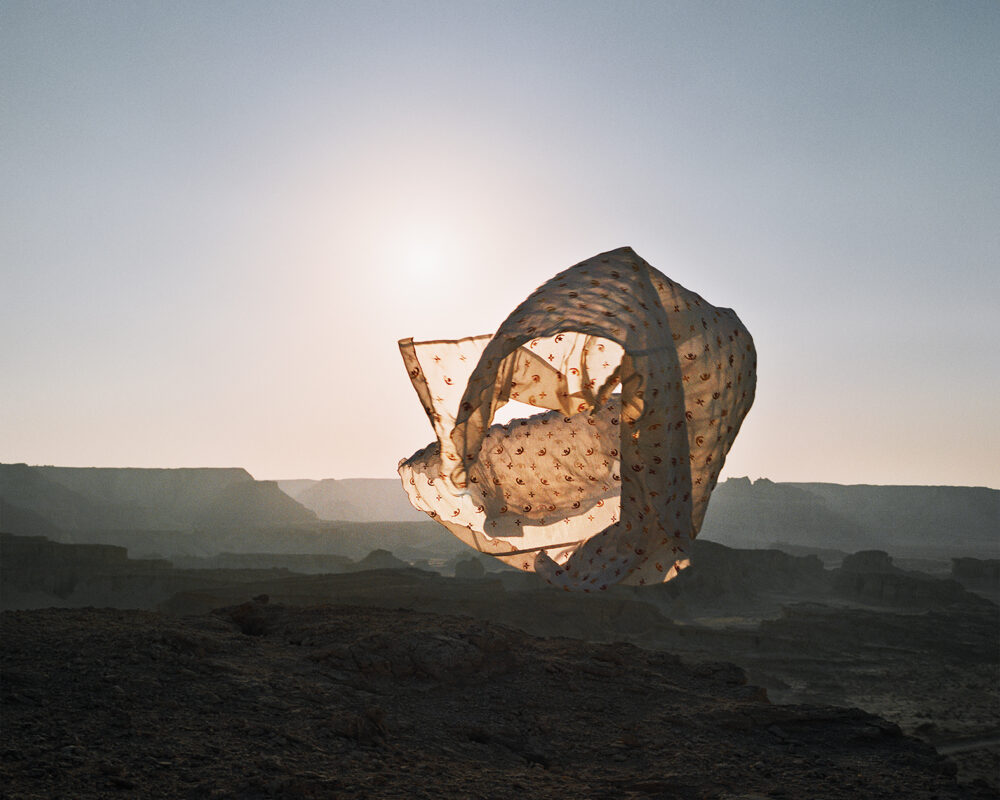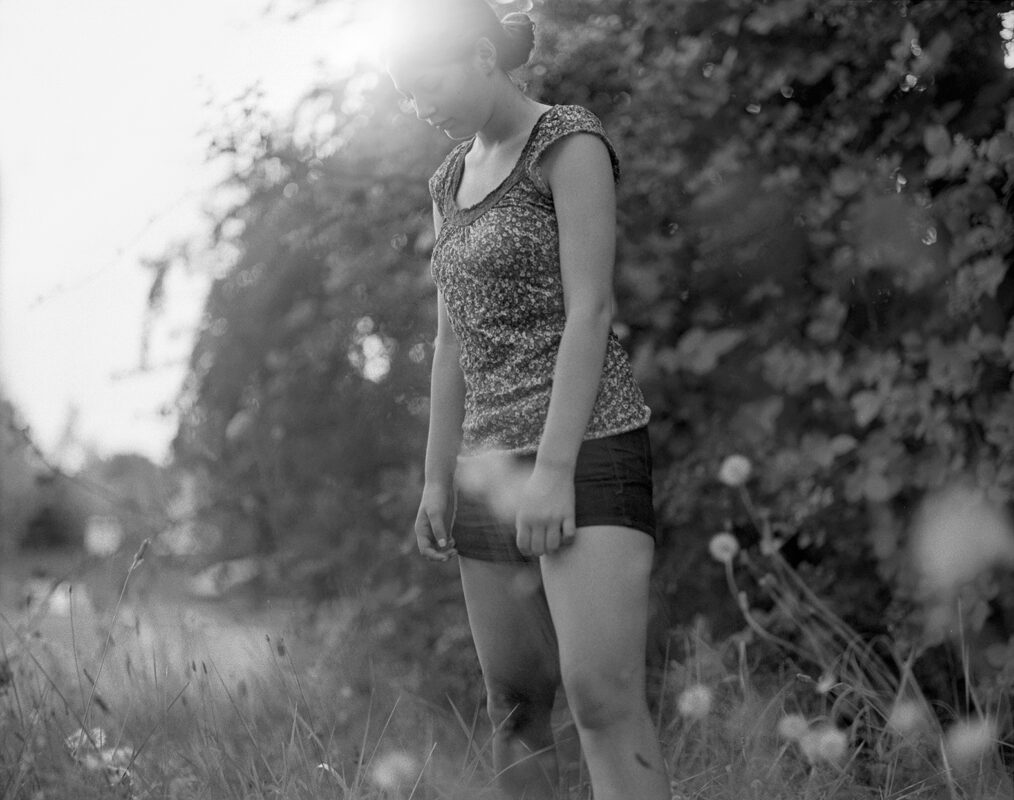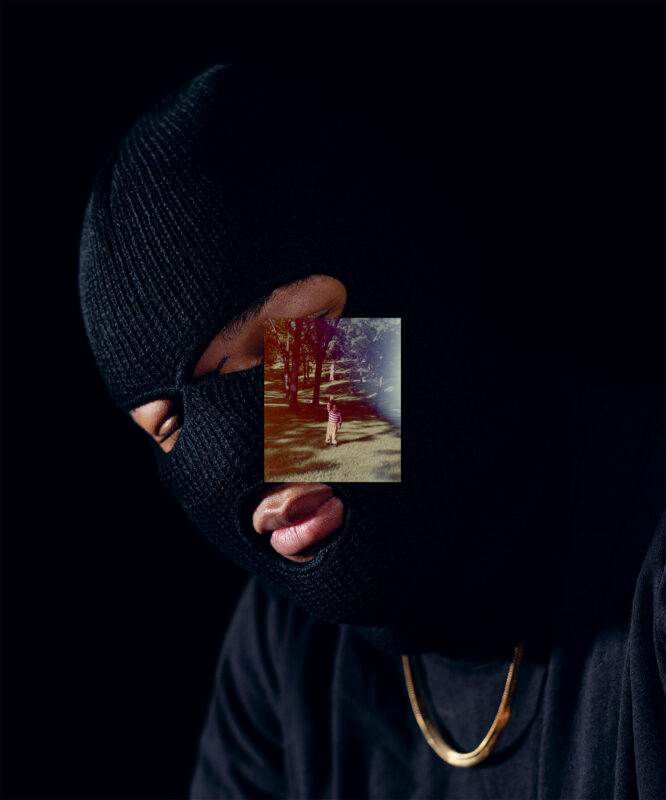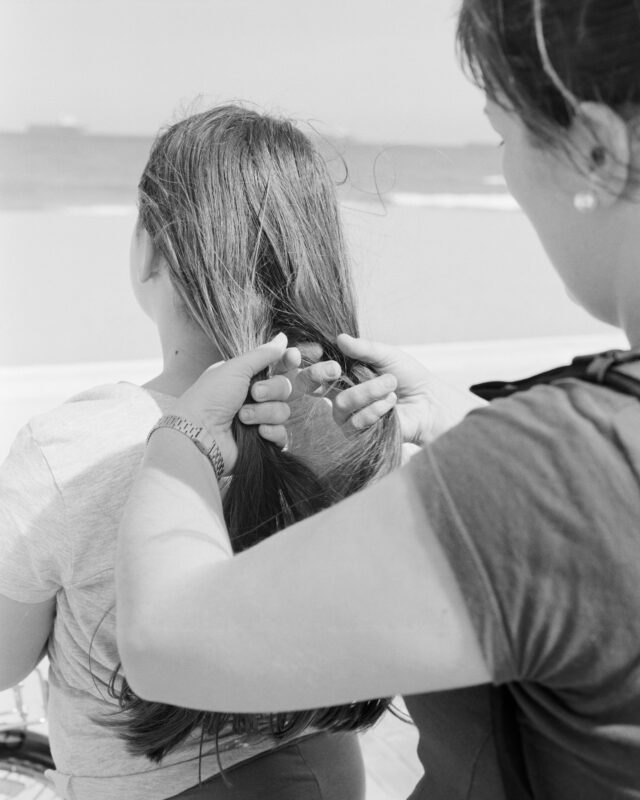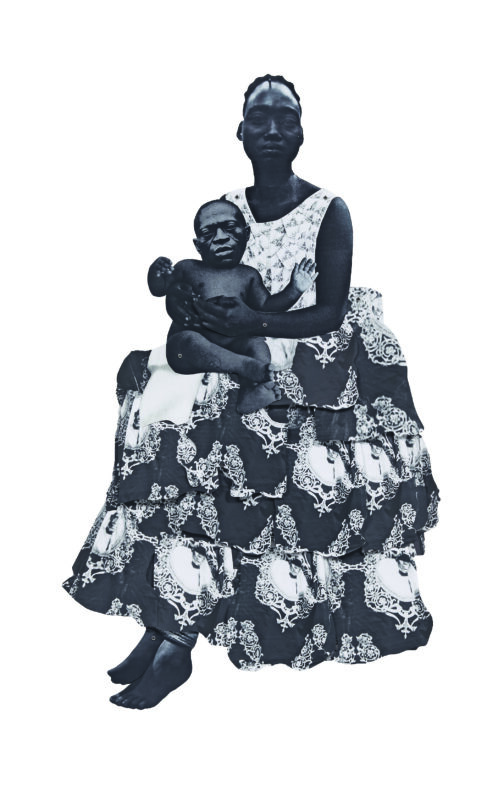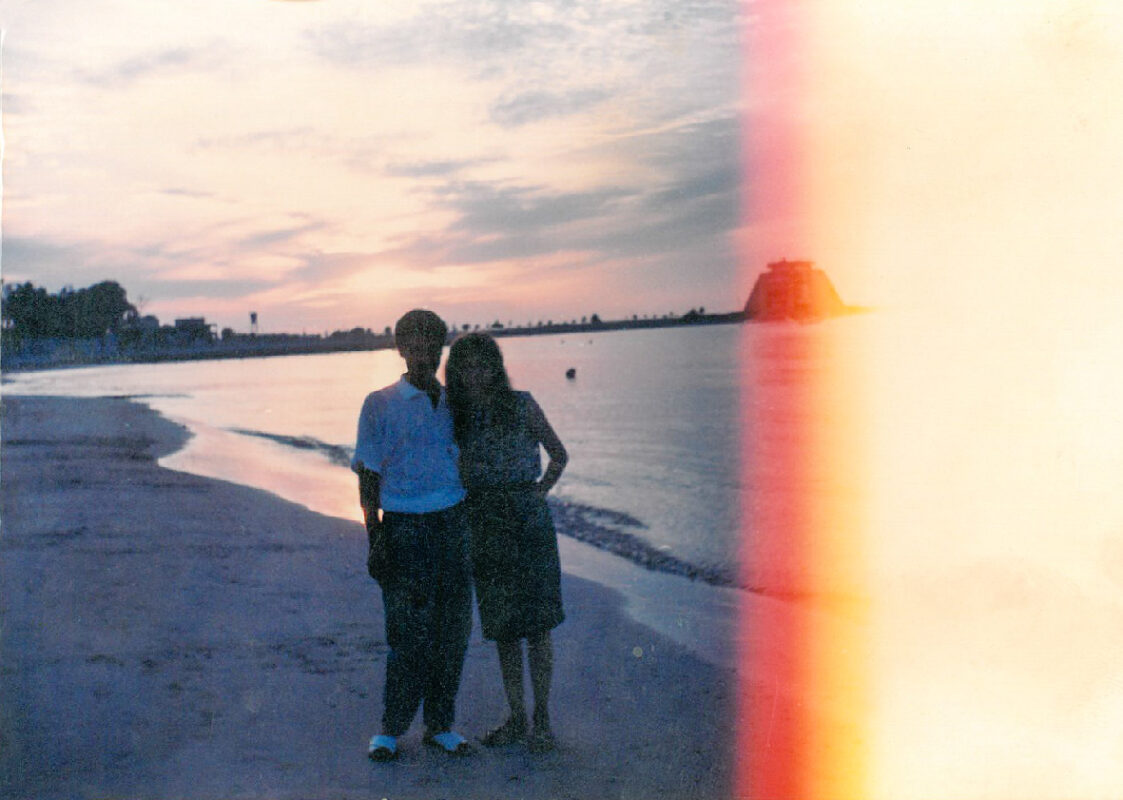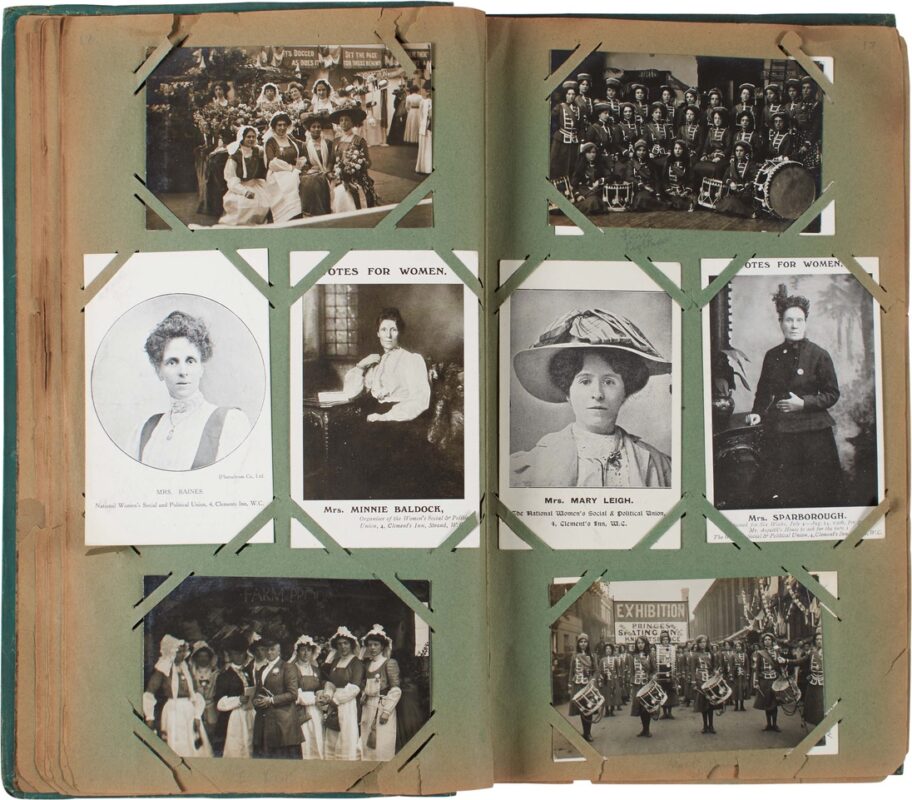Top 10 (+1)
Photobooks of 2021
Selected by Alessandro Merola and Tim Clark
As the year draws to a close, an annual tribute to some of the exceptional photobook releases from 2021 – selected by Editor in Chief, Tim Clark, with words from Assistant Editor, Alessandro Merola.
1. Gilles Peress, Whatever You Say, Say Nothing
Steidl
What Gilles Peress has achieved with Whatever You Say, Say Nothing – unsurprisingly shortlisted for the Deutsche Börse Photography Foundation Prize 2022 – is astonishing, and surely must rank amongst the highest feats in photobook history. In some 2,000 pages, sprawled across two volumes as well as an almanac entitled Annals of the North, the esteemed French photographer embarks on a visual and philosophical exploration of the ethno-nationalist conflict that engulfed Northern Ireland from the late 1960s to 1998. With no beginning, middle or end, Peress’ tale defies the orthodoxies of linear narrative by orchestrating 22 semi-fictional “days”: days that recycle, over and over, the rituals of violence, protest and grieving; days in which the carnage becomes inseparable from the quotidian. That said, whilst Peress exploits photography’s “reality effect” to register the material specifics of the Troubles, it’s in the work’s accumulation that the strife operates synecdochically. For it expresses – like a photographic Finnegans Wake (1939) – what is elsewhere – or, rather, everywhere: the simultaneity of good and evil; the push and pull of power; the helicoidal unravelling of time. That this work speaks to such profound, ineffable ideas is a testament to the potential of the photobook when it finds its upper limits. And, indeed, few could have executed this unison between content, structure and form so flawlessly as Gerhard Steidl has: a book of all books, unlike anything that has come before.
2. Gregory Eddi Jones, Promise Land
Self Publish, Be Happy Editions
With the mounting complexities which define our times requiring increasingly sophisticated modes of storytelling, it is exciting to witness an artist invent something so utterly imaginative that it makes us see the world anew. Promise Land, by Gregory Eddi Jones, is one such example. In this whirling, poetic mashup, Jones riffs off T. S. Eliot’s apocalyptic epic, The Waste Land (1922), of course penned in the wake of the First World War and influenza pandemic. Aligned with Eliotean tactics of appropriation, Jones’ sequences are comprised of stock photographs: consumerist fantasies which, for the artist, not only bespeak the excesses of contemporary culture, but represent photography in its most hollow, debased and regurgitative state. Through a profusion of détournements – cropping, compositing, inverting, inkjet hacking and digital retouching – Jones makes implicit values explicit, inviting readers to re-evaluate the relationship between photography and truth, or sever their ties altogether. Here is a work that is bold, irreverent and oftentimes chilling, not least for the bookending displays of a composer waving his wand before a spell-bound audience; suggestions that there may be as much method as madness in this heap of broken images.
3. Hoda Afshar, Speak The Wind
MACK
From start to close – and vice versa – Hoda Afshar’s Speak The Wind entrances with its eloquent rendition of zār: the wind spirits which, for millennia, have shaped the topography and traditions of the islanders of the Strait of Hormuz, an oil passageway joining the Arabian Gulf and the Gulf of Oman. They are said to inflict disease, placated only through ritual dialogues conducted with the gusts themselves. Situated somewhere between the sacred and the baleful, Afshar’s incantatory, cinematically-paced photographs do not so much conjure a people but channel their psychic entanglement with place. Punctuating the book are bound pages depicting wind-sculpted mountains; they form pockets that conceal islanders’ drawings and writings describing their experiences of being possessed by zār. Afshar’s dimensional switches cleverly rupture photography’s predispositions for certainties; those which can be clutched, seen. It’s easy to get swept up by these pages, to concede to forces greater than us, yet Afshar also empowers readers like she does her subjects. Setting foot on twinkling black sands, or setting sail through seas as red as blood, we are ultimately met by a crossroads: between reality and fiction; between this world and another.
4. Tarrah Krajnak, El Jardín de Senderos Que Se Bifurcan
Dais Books
The breakthrough of Tarrah Krajnak has been one of the most significant of the year, and the artist’s nuanced handling of archival material is on full view in this precious book. Borrowing the title and parable blueprint of Jorge Luis Borges’ short story, The Garden of Forking Paths (1941), it plays a deep concern with the circumstances surrounding her birth: amidst the terror of Peru’s military dictatorship in the 1970s, Krajnak’s biological mother travelled to Lima to work as a maid; she was raped, and gave birth to Krajnak in 1979, ‘the year of the orphans’. Instead of attempting to resolve these personal and political narratives, Krajnak invents mothers, imagines lineages and initiates what she calls ‘misremembrance’. The asymmetrical sequences pull our attention in fractured ways, moving through re-photographed images from political magazines, oral testimonies of women born in 1979 and the artist’s interactions with projections in which temporalities enmesh like palimpsests. Krajnak’s sharp prose and deliberate mistranslations bestow an added intensity to this book’s reckoning with subjectivity as much as history, all the while collapsing the boundaries between them. With El Jardín de Senderos Que Se Bifurcan, Krajnak shows that affinity can be innate, even historical, persisting in the psyches of those separated by space and time yet linked by collective knowledge, memory and trauma. Theirs is a storied history, seen through a glass, darkly.
Boasting lavish printing and impeccable production values, Phaidon’s survey of Catherine Opie’s prodigious output is of the highest order and entirely befitting of one of the great chroniclers of this century. There is much to be praised for the ways in which over 300 photographs, spanning 40 years, have been mapped, not chronologically, but thematically across three chapters: People, Place and Politics. Yet, the lines which delineate them are almost non-existent. One spread pairs a headshot of Pig Pen (Opie’s long-time friend and subject) donning a fake moustache with a photograph of a lesbian couple seated in their backyard with arms interlocked; another the iconic ‘Self-Portrait/Cutting’ (1993) with a literal manifestation of the domestic scene carved-out on Opie’s back. They are juxtapositions that steer us towards the central paradox of Opie’s oeuvre: for all its supposed extremity in staging the queer body as a site of self-actualisation, there is, at its heart, a yearning for the fundamental. Because, whether documenting human, ecological or architectural subjects, she never strays far from home, hence the tome’s modest, perfectly-judged cover, which displays the young artist photographing herself in the mirror alongside potted plants and a wood burning stove. Opie’s work feels vital; it always did.
6. Raymond Meeks, Somersault
MACK
Raymond Meeks’ very beautiful and affecting ode to his daughter, Abigail, is a charged companion piece to his much admired aubade, ciprian honey cathedral (2020). Through imperceptible yet tenderly convicted narrative shifts, Meeks unveils the inner-world of a young woman on the cusp of adulthood and leaving home. He coaxes out Abigail’s emotional subtleties in a way perhaps only a parent could; she is alternately timid, whimsical, inquisitive and fearless. However, Meeks honours the guarded mysteries of adolescence, too. Abigail becomes, for her father, a horizon where intimacy and loneliness converge, as mirrored by Meeks’ sublime evocation of the wilderness that envelops their home, delicately tethered by train tracks, telephone wires and wilting daisies. His impossibly lucid visions crackle with longing throughout until we reach the parting words of Abigail herself, who recalls the innocent daydream of her younger self: ‘She wants to climb on a train and go where it takes her.’ The grace of Somersault is to measure distance whilst recognising that few distances are ever fixed.
7. Zora J Murff, True Colors (or, Affirmations in a Crisis)
Aperture
Where Zora J Murff ’s previous book, At No Point in Between (2019), takes as its subject the historically Black neighbourhood of North Omaha, Nebraska, his new book is nation-wide in scope. Beneath the swirling surface of True Colors (or, Affirmations in a Crisis) – currently displayed in exhibition form at Webber Gallery, London – lies a provocative meditation on America: its fragile bonds, elective affinities and colonial legacies. From police brutality and lynching to redlining and economic oppression, violence – fast and slow – runs through the veins of this book, so arresting in its dense web of image types: vernacular photography, newspaper clippings, Internet screenshots, video stills, landscapes, portraiture and more. Murff’s dexterous use of juxtaposition – often contextualising his own photographs alongside found and appropriated material – brings into focus the medium’s complicity in creating and maintaining racial hierarchies through the spectacle, commodification or erasure of Black bodies. This book serves as not only a complicated, oft-impenetrable ‘manual’ for coming to terms with the country’s past and navigating its present, but – true to its title – an autobiographical retelling of the epiphanies of a young Black artist finding his voice. And it’s emphatic.
8. Massao Mascaro, Sub Sole
Chose Commune
Sub Sole – a classical, richly-layered piece of narrative work which was recently exhibited in an elegant show curated by Fannie Escoulen at Fondation A Stichting, Brussels – follows after Homer’s The Odyssey (c.750 BC), traversing the coasts of the Mediterranean Sea. Its waters have, since time immemorial, been a crucible for voyages: some mythical and heroic; some real and tragic. Against the backdrop of such tense, intersecting contexts, Massao Mascaro furnishes our gaze across relics, architecture and the gestural relations between those who have sought refuge in Europe. These passing impressions are loosely arranged through nine visual poems, each introduced by a literary fragment which rolls along the bottom edges. The clarity of Mascaro’s frames; the lyricism of his sequences; the mesmerising gradations of Mediterranean light: all of them are a function of the casual grandeur of the world he has crafted. Yet, there is also a deeply disturbing cycle to this book, which ultimately feels suspended in time – timeless even – as intimated by the dialless clock that decorates its front cover, or the line from which its title derives: ‘There is nothing new under the sun’ (Ecclesiastes, 1:10).
9. Frida Orupabo
Sternberg Press and Kunsthall Trondheim
Although the subversive strategies of Frida Orupabo are best experienced via her Instagram feed, @nemiepeba, and on the gallery wall, this debut monograph affords a persuasive translation of her work in book form. The opening black pages (preceding incisive essays by Stefanie Hessler, Lola Olufemi and Legacy Russell) showcase Orupabo’s social media images, offering flashes of the artist’s extraordinary online archive – a ‘voluptuous trail of black continuity’, as Arthur Jafa called it – which she uses as a laboratory to make her paper collages. Whilst the inclusion of installation views here attests to the uneasy transitions these physical pieces undergo when they enter the gallery’s white space, it also evinces the manifold ways of seeing Black bodies that Orupabo compels. W. E. B. Du Bois’ notion of ‘double consciousness’ – that is, viewing oneself through the coloniser’s eyes – is undeniable, but so too is bell hooks’ ‘oppositional gaze’. Orupabo’s greatest triumph might be in the transmission of a wholly new consciousness, found in the unforgettable, searing stares of her feminine protagonists. Their pasts are fraught, but, in Orupabo’s curative hands, they embody the spirit of resistance that literally underpins them.
10. Alexis Cordesse, Talashi
Atelier EXB
The catalytic inquiry of Alexis Cordesse’s subtle entry into the vernacular genre is this: how does one evoke a tragedy that is paradoxically made invisible through too many images? The tragedy in question is the Syrian civil war, an ongoing conflict that has displaced over half the country’s population since 2011. Seeking an alternative to the sentimental dramatisations of war all too often circulated by mainstream media, Cordesse performs an act of collective remembrance by collating personal photographs belonging to those living in exile in Turkey, Germany and France; those who entrusted him enough to share the memories they hold dear. These artefacts have, like their owners, survived perilous journeys, for, if they had been seized as pieces of evidence at the borders, they might not have made it – and, indeed, many didn’t. Such is the precarity of Talashi, whose title translates from Arabic to Fragmentation, Erosion or Disappearance. Slowly weaving what ultimately becomes an ever-vanishing tapestry of home, this book quakes with a quiet, mournful energy: a reminder that though all photographs are silent, some are more silent than others.
+1. What They Saw: Historical Photobooks by Women, 1843–1999
10×10 Photobooks
The advent of photobook history – a still relatively new field of study – set in motion the books-on-photobooks. Although doing much to further our understanding of the medium, they have failed to redress the canon’s long-standing male biases. Enter What They Saw: Historical Photobooks by Women, 1843–1999. In the foreword to this important anthology, editors Russet Lederman and Olga Yatskevich stress the issues of access and funding or lack thereof; ergo their necessary expansion of what constitutes a “photobook” via the inclusion of albums, scrapbooks and maquettes. Indeed, marginalised histories are not just a question of gender, but of class and race too, hence the scarcity of, for example, African photobooks as opposed to books-on-Africa. The anthology countervails these factors through its signature turn: an interwoven, parallel timeline that charts publishing, magazine and small press events which might not have realised “photobooks” in the narrow, Western sense, but certainly influenced history. Many of these notations are incomplete, acting more like leads. Of course, one wishes that such a sole dedication to female authors did not have to exist. However, until it doesn’t, it prevails as a critical resource for discovering forgotten parts of photobook history: a history that is longstanding, forever rich yet still being written.♦
—
Alessandro Merola is Assistant Editor at 1000 Words.
Tim Clark is Editor in Chief at 1000 Words, and a writer, curator and lecturer at The Institute of Photography, Falmouth University. He lives and works in London.
Images:
1-Gilles Peress, Whatever You Say, Say Nothing (Steidl, 2021). Courtesy the artist and Steidl.
2-From the chapter ‘The Last Night’ in Gilles Peress, Whatever You Say, Say Nothing (Steidl, 2021). Courtesy the artist and Gilles Peress Studio.
3-‘Betterland’ (2019) from Gregory Eddi Jones, Promise Land (Self Publish, Be Happy Editions, 2021). Courtesy the artist and Self Publish, Be Happy Editions.
4-‘Untitled’ from Hoda Afshar, Speak The Wind (MACK, 2021). Courtesy the artist and MACK.
5-‘Dead Ringer/Self-Portrait as Found Photograph (1979 Lima, Peru)’ (2018) from Tarrah Krajnak, El Jardín de Senderos Que Se Bifurcan (Dais Books, 2021). Courtesy the artist and Dais Books.
6-‘Joanne, Betsy & Olivia, Bayside, New York’ (1998) from Catherine Opie (Phaidon, 2021). Courtesy the artist and Regen Projects, Los Angeles; Lehmann Maupin, New York/Hong Kong/Seoul/London; Thomas Dane Gallery, London and Naples and Peder Lund, Oslo.
7-‘Untitled’ from Raymond Meeks, Somersault (MACK, 2021). Courtesy the artist and MACK.
8-‘Stole-On (or, I wanna be a world star)’ (2021) from Zora J. Murff, True Colors (or, Affirmations in a Crisis) (Aperture, 2021). Courtesy the artist and Webber Gallery, London.
9-‘Untitled’ from Massao Mascaro, Sub Sole (Chose Commune, 2021). Courtesy the artist and Chose Commune.
10-‘Untitled’ (2017) from Frida Orupabo (Sternberg Press and Kunsthall Trondheim, 2021). Courtesy the artist, Sternberg Press and Kunsthall Trondheim.
11-‘Untitled’ from Alexis Cordesse, Talashi (Atelier EXB, 2021). Courtesy the artist and Atelier EXB.
12-Spread from Christina Broom and Isabel Marion Seymour, Women’s Social and Political Union Postcards Album (self-published, 1908–14). Courtesy Museum of London.

